
Happy Birthday, Michelangelo di Lodovico Buonarroti Simoni! Michelangelo, as he is more famously known, was born on the 6th of March, 1475 (died: February 18, 1564) and would have been 544 years old today! When we think of the great Renaissance artists, like Michelangelo, I think we imagine them in action. Painting, sculpting, drawing, creating beautiful statues or paintings. One never thinks of them with their feet up, in pyjamas, having a glass of wine or binging on Netflix and eating pizza just relaxing at home.
While most museums in Florence are extremely busy, I had the opportunity recently to spend some quality time with Michelangelo. I was there with friends and TravelFoodCool readers (THANK YOU!), Fran and Janet, in Florence and I think I counted five, yes five, other people the entire time we were in the Casa Buonarotti. There were more people at the market stall where we were buying gloves than were in this museum, and I have to say, it’s a shame.
Around the corner from the Basilica of Santa Croce, while Michelangelo is buried, lies the Casa Buonarotti, which was Michelangelo’s home from 1508. When he died, he left it to his nephew, Leonardo Buonarotti. His grandnephew, Michelangelo Buonarotti the Younger (a poet and writer 1568 -1646), converted the house into a museum and dedicated it to his famous uncle.
The family archives and letters from Michelangelo are housed here, as well as sketches, models and two early sculptures from his early years, the Madonna of the Stairs (Madonna della Scala – 1490) and the Battle of the Centaurs (1492), but more on these later.
The museum is housed over two floors with the ground floor showcasing a collection of Etruscan pieces, collected and stored by Filippo Buonarotti (1761 -1837), an antiques and art dealer, as well as pieces inspired by Michelangelo’s works.
Of particular note is a statute by Emilio Zocchi (1861) of a young Michelangelo carving a faun’s mask. This statue is a depiction of an event in Michelangelo’s life, when he was 15 years old at the art school in the Medici gardens. Supposedly, one day, Michelangelo saw an old marble of a faun’s head and started to copy it. However, the marble was old, and as Michelangelo started to carve, he started adding items that he felt should have been there. The mouth was missing on the original, and Michelangelo decided that the faun’s mouth would have been empty of teeth, so he carved the mouth wider. Lorenzo de’ Medici happened to be in the garden at the time and watched Michelangelo carving. The story has that it was at this point that Lorenzo di Medici became his patron.
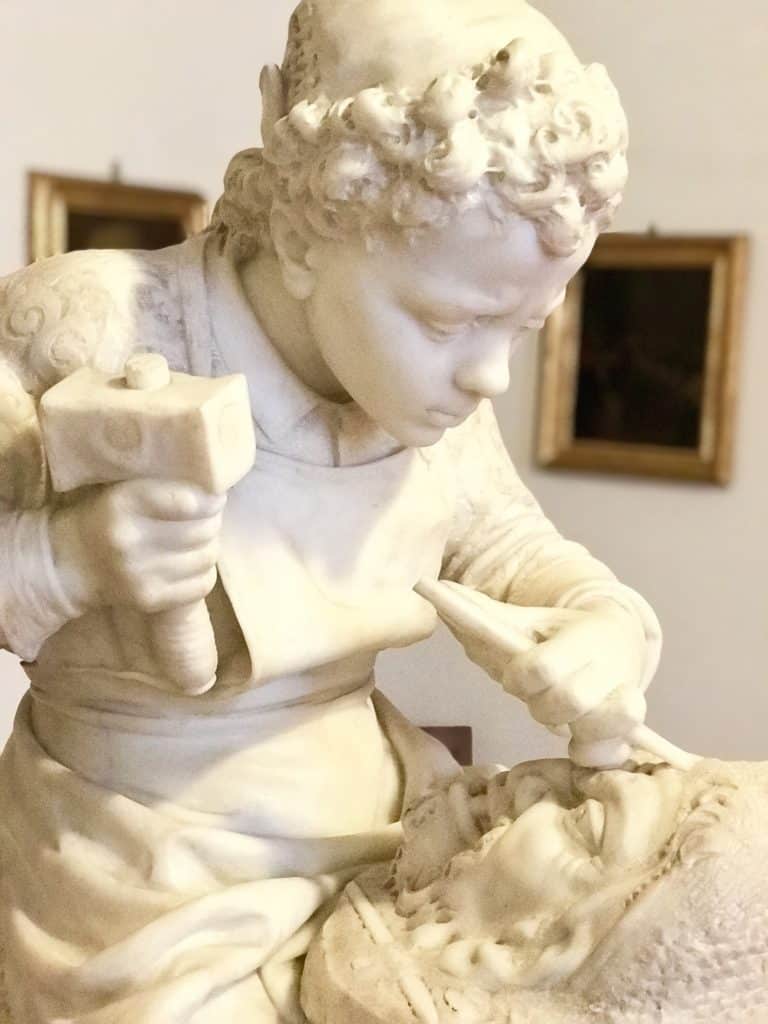
The upper floor houses both the Madonna della Scala (Madonna of the Stairs) and the Battle of the Centaurs.
The Madonna della Scala is a shallow-relief carving, considered to be the first sculpture that Michelangelo carved.The Madonna della Scala would have been completed when Michelangelo was 15, about the same age at which he is portrayed in Zocchi’s statue. At the time, Michelangelo was sent to study with Donatello’s best pupil, Bertoldo, who directed a school of ancient and modern sculpture in Lorenzo the Magnificent’s garden of San Marco. This piece was said to have been influenced by Donatello (and Donatello’s delicate carving style of shallow-relief), however, many thought this piece showed that this young student was already superior to the great master. The piece is also unique (for the time) as it is different than the usual Madonna and Child. The Virgin Mary is not looking forward or adoringly at her child, but her view seems to look reflectively away. The Baby Jesus also looks away, his face covered, and seems to be asleep on his mother’s breast.
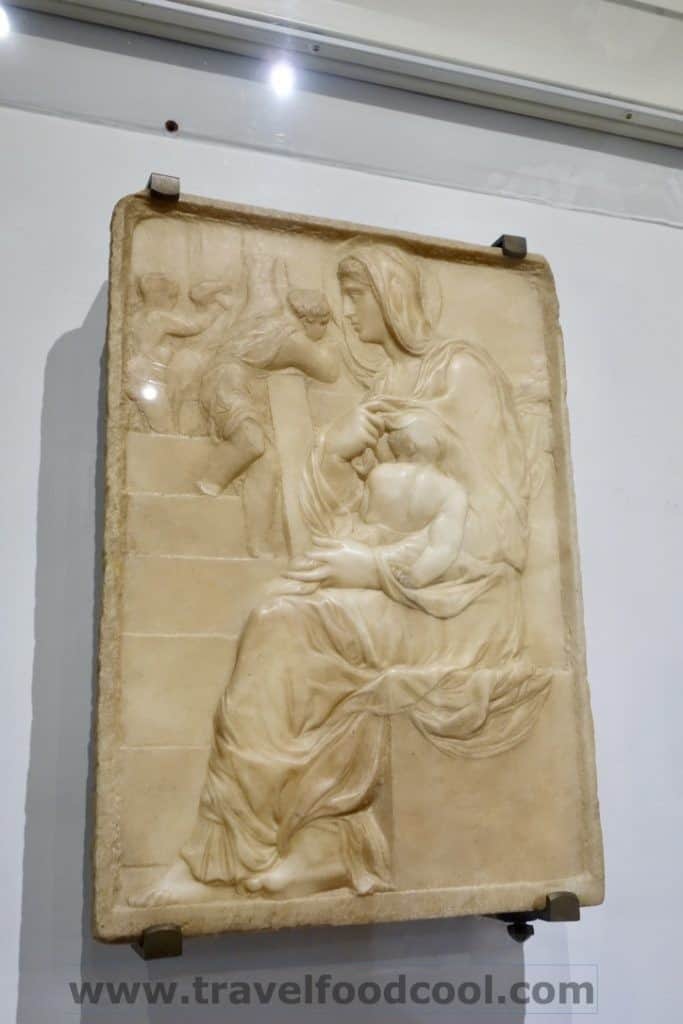
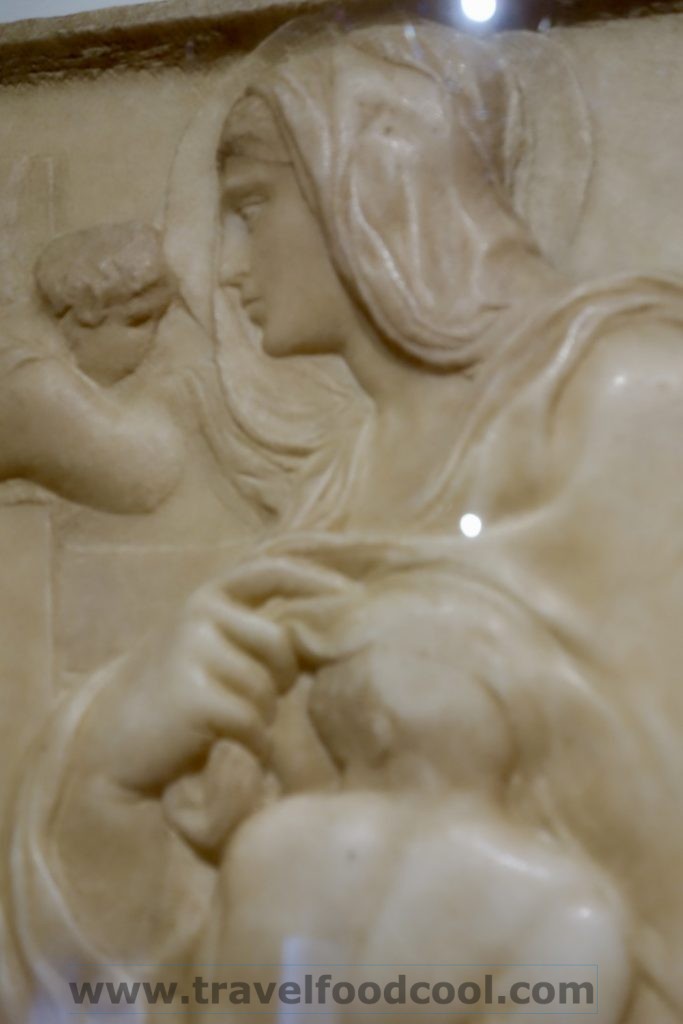
Personally, while I liked the Madonna della Scala, I LOVED the Battle of the Centaurs (Battaglia dei Centauri). This work is thought to have been completed by Michelangelo two years after the Madonna della Scala and the difference in his carving style is amazing. This is more of a classical piece, with more of the movement (and finely chiseled male buttocks) that we are used to seeing when we think of Michelangelo. Probably my favourite part of this piece is the one man who is turned around facing outwards as if to say “Hey, look at me”! There is also one face that is reminiscent of the “older Michelangelo self-portrait” which he occasionally inserted in his paintings. I found this interesting. It’s as if Michelangelo, at 17, was predicting what he would look like as an older adult.
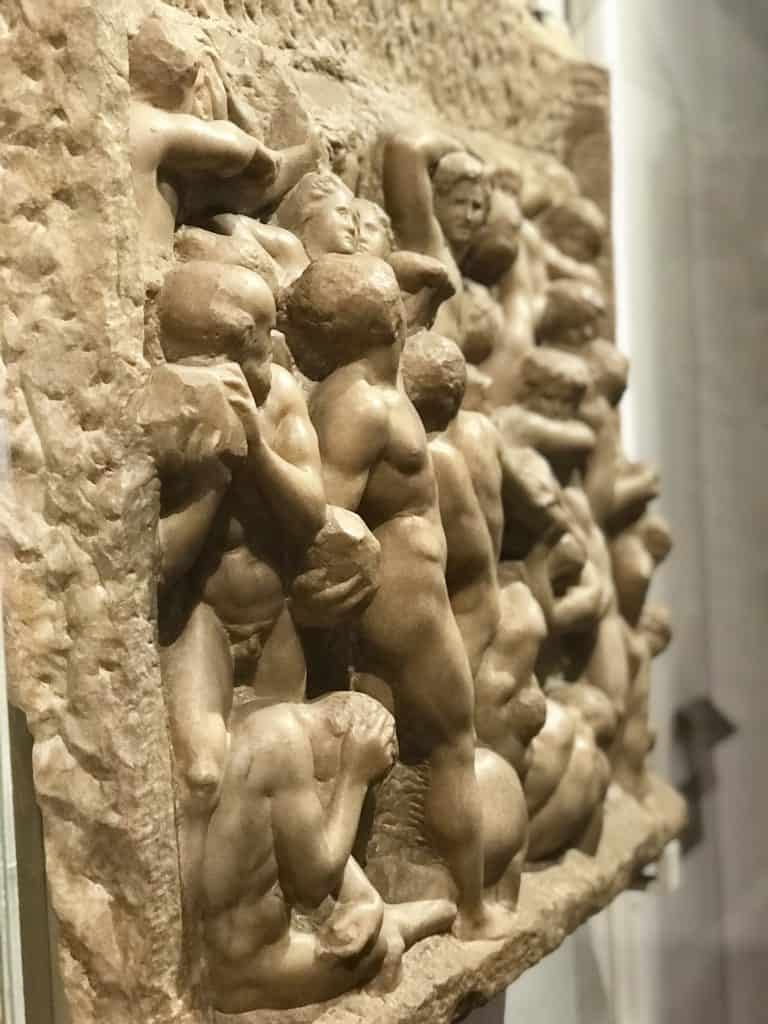
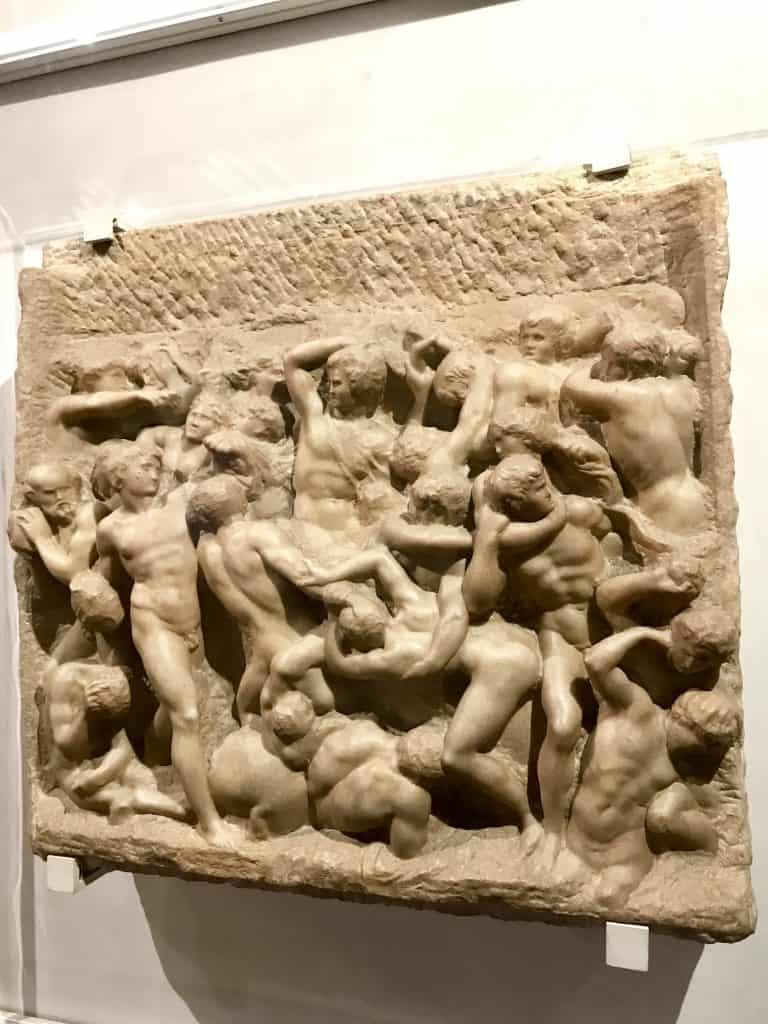
A small side room has Michelangelo’s model for the Basilica of San Lorenzo. Pope Leo X (the Medici Pope) had given Michelangelo the commission (1518) for the facade in white Carrera marble.
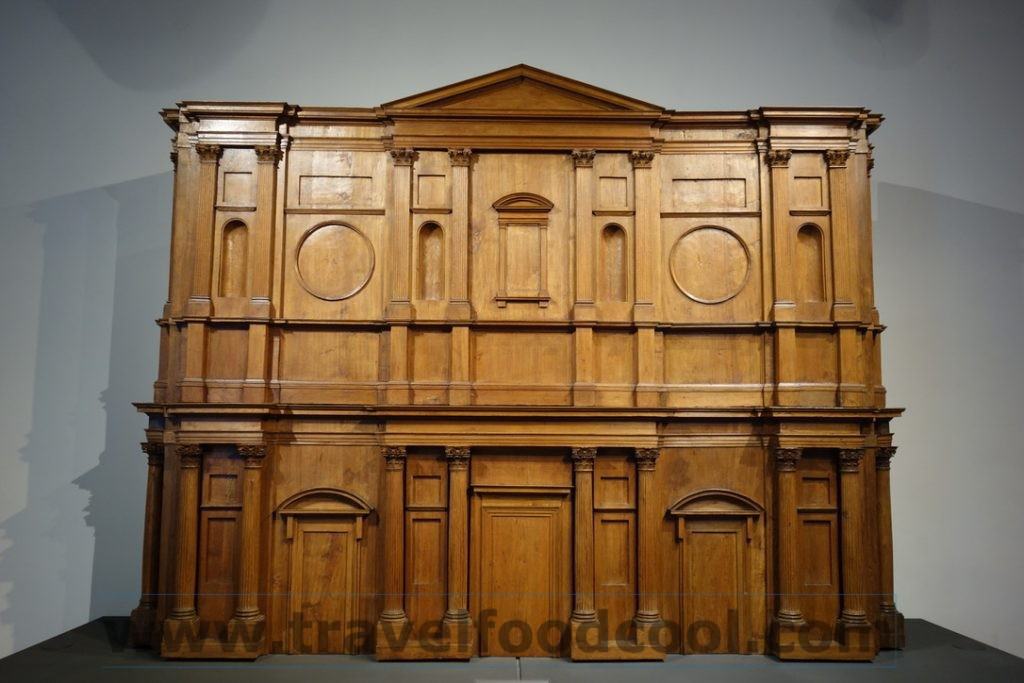
It never happened (see photo below).
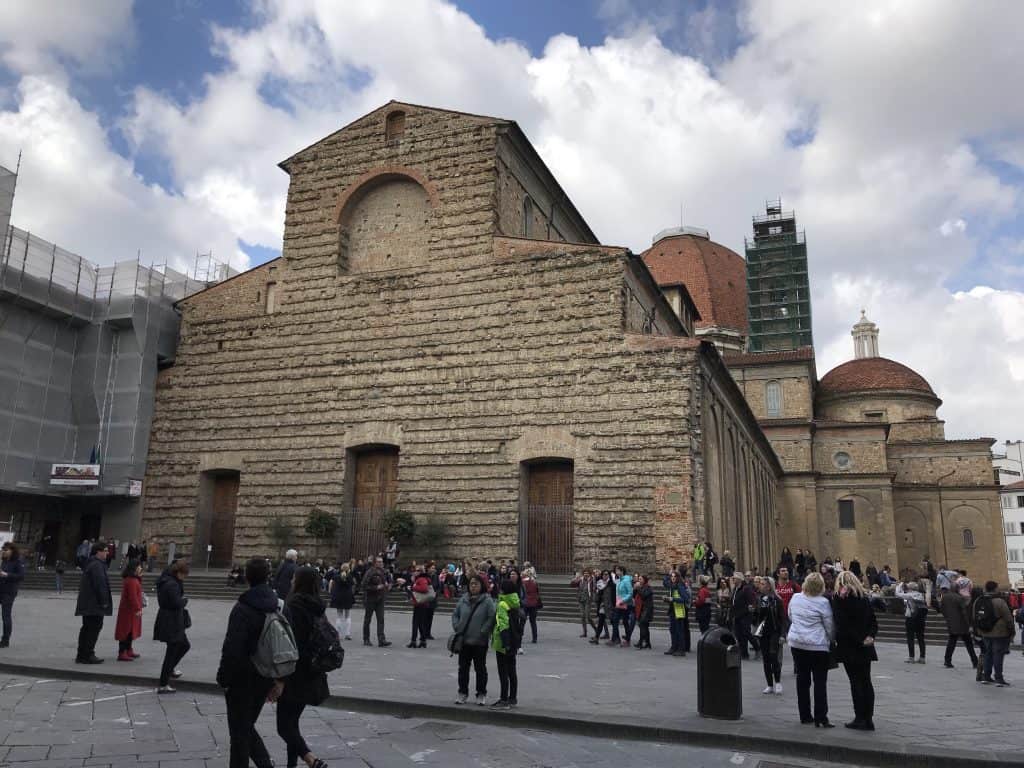
The next room, with coffered ceilings, is under the watchful eye of a sculpture of Michelangelo by Antonio Novelli (1633-16355) and contains some of the 205 sketches that are in possession of the museum.
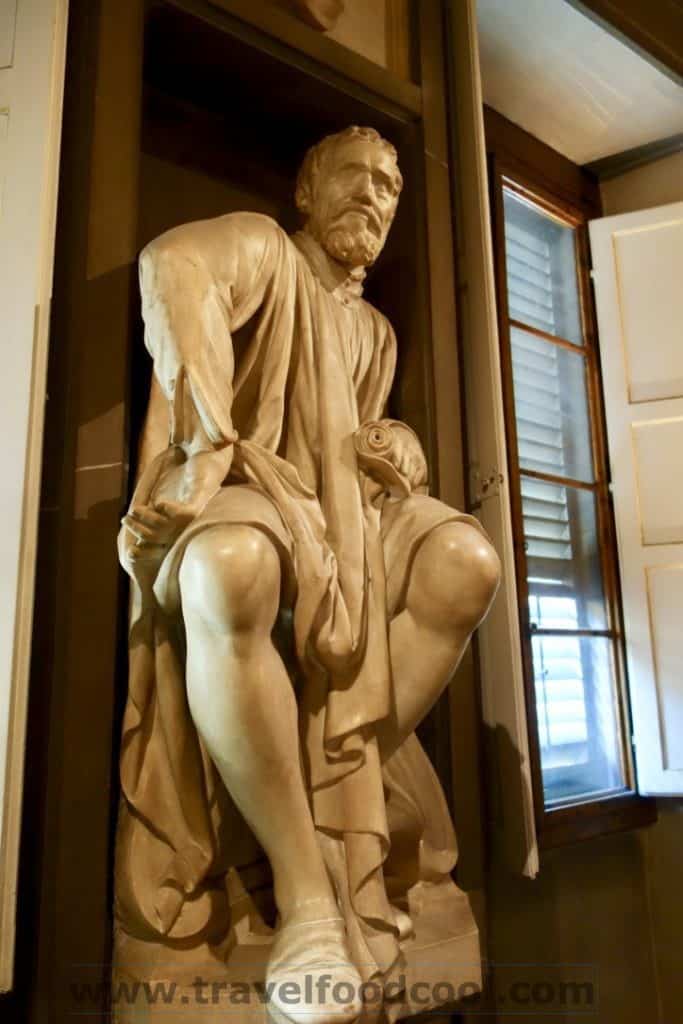
The sketches are a real treasure trove as, when Michelangelo died, he had requested that all his rough work be destroyed – he didn’t want people to know how he worked and laboured to come up with his final work. The room is climate controlled and the sketches, under glass, rotate through the collection.
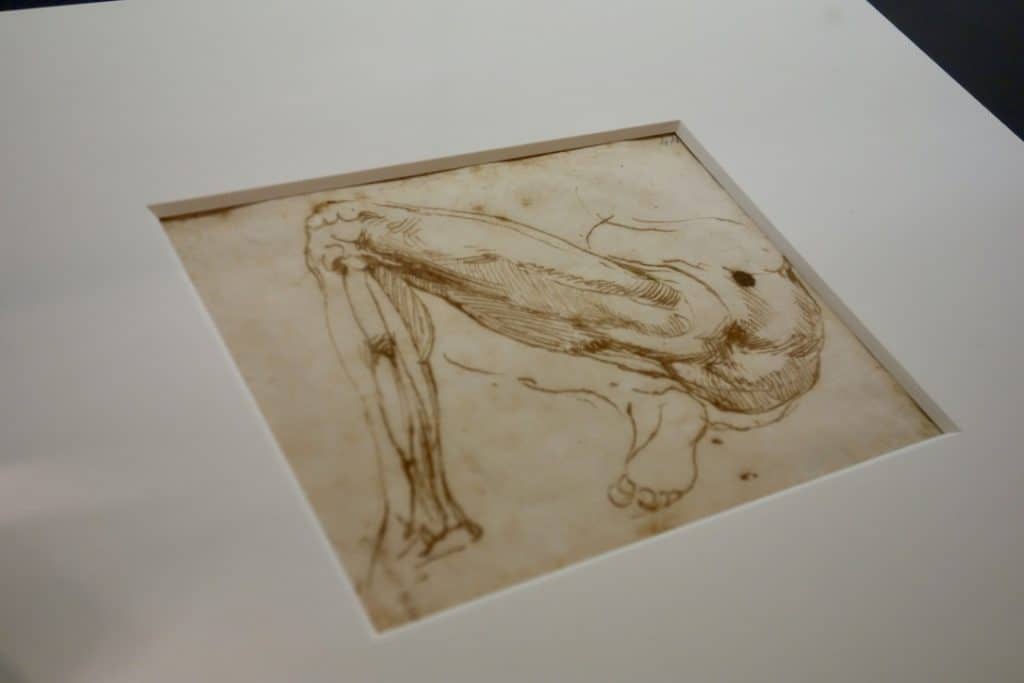
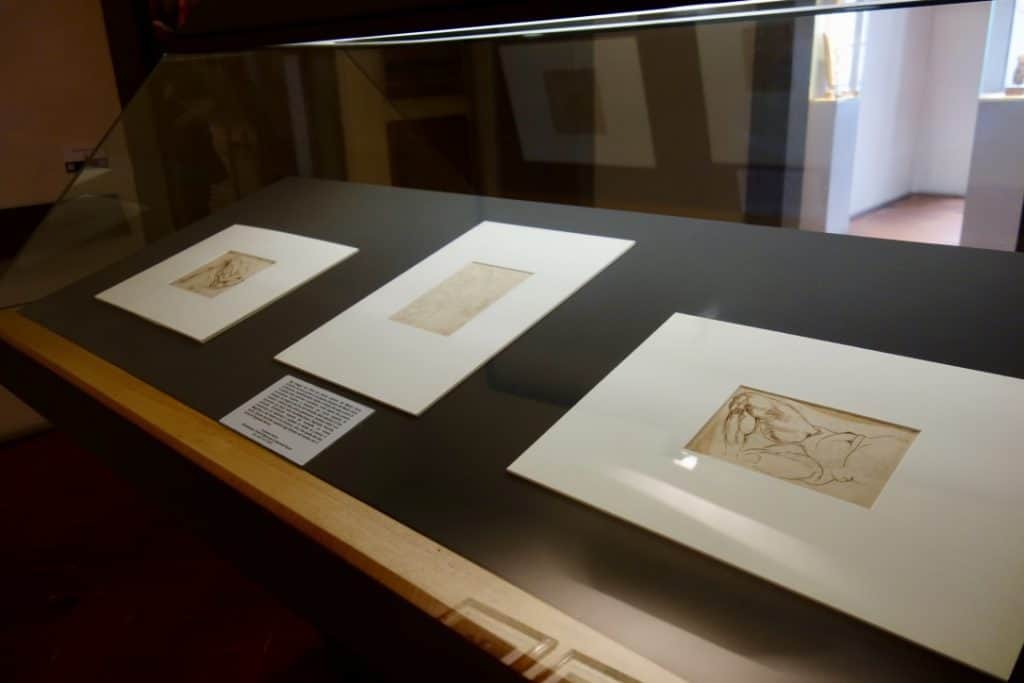
The Studio room is decorated with frescoes on the walls depicting “geniuses”, poets, heroes and scientists. They almost seem to lean out of the walls calling to you. These rooms are decorated with various pieces of furniture as well as various small sculptures and other interesting pieces.
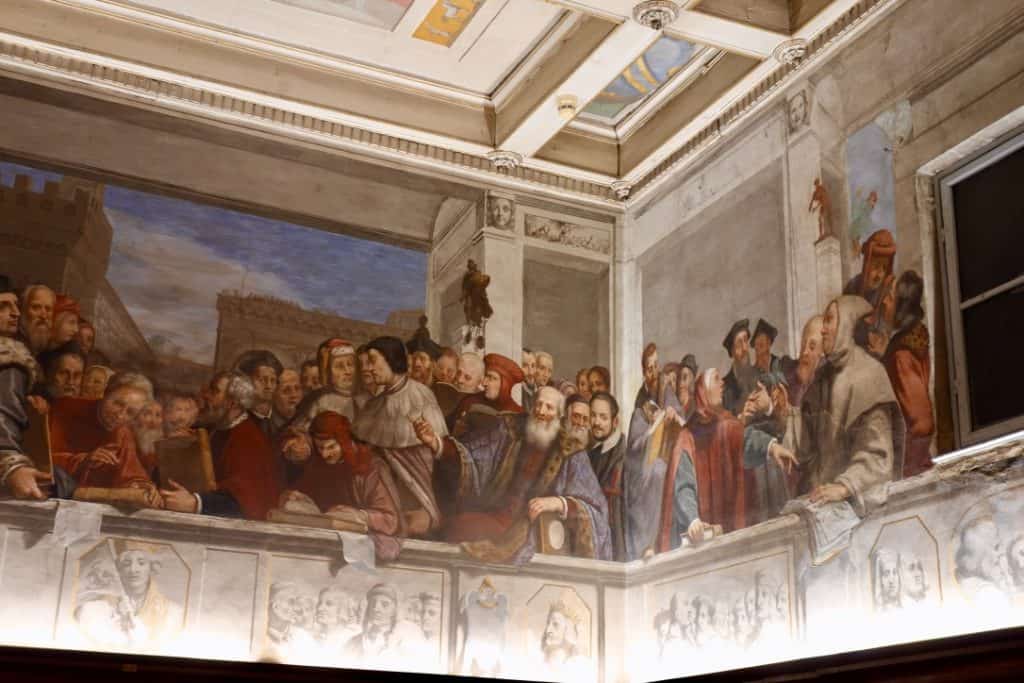
The Gallery is painted by various artists and tells the story of Michelangelo, his life and his works. Don’t forget to look up at the ceiling, as those images pay tribute to Michelangelo’s virtues.
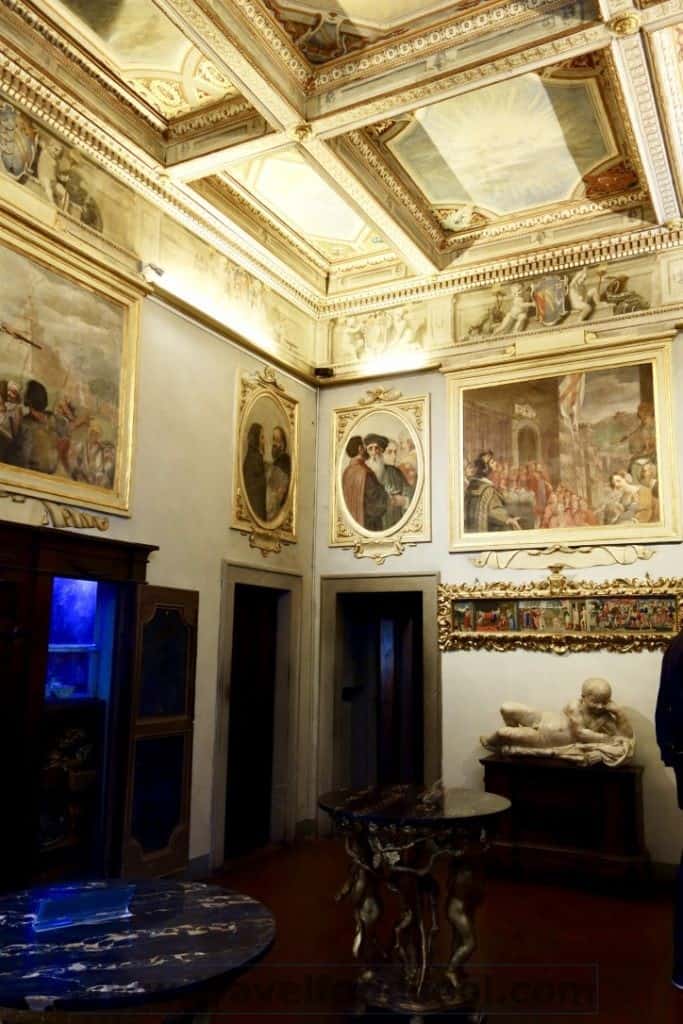
Most of the rooms, in fact, are frescoed. They were commissioned by various artists in 1612 by Michelangelo the Younger. The Angels Room on the upper floor also showcases his work. Michelangelo the Younger, the grandnephew, was a poet, playwright and “man of letters”. He studied at the University of Pisa and was friends with Galileo Galilei and the future Pope Urban VIII (Maffeo Barberini), so who knows, Galileo and the Pope probably also hung out at the house! Michelangelo the Younger unfortunately lost his fortune in a bank failure in 1640. He is also buried in Santa Croce.
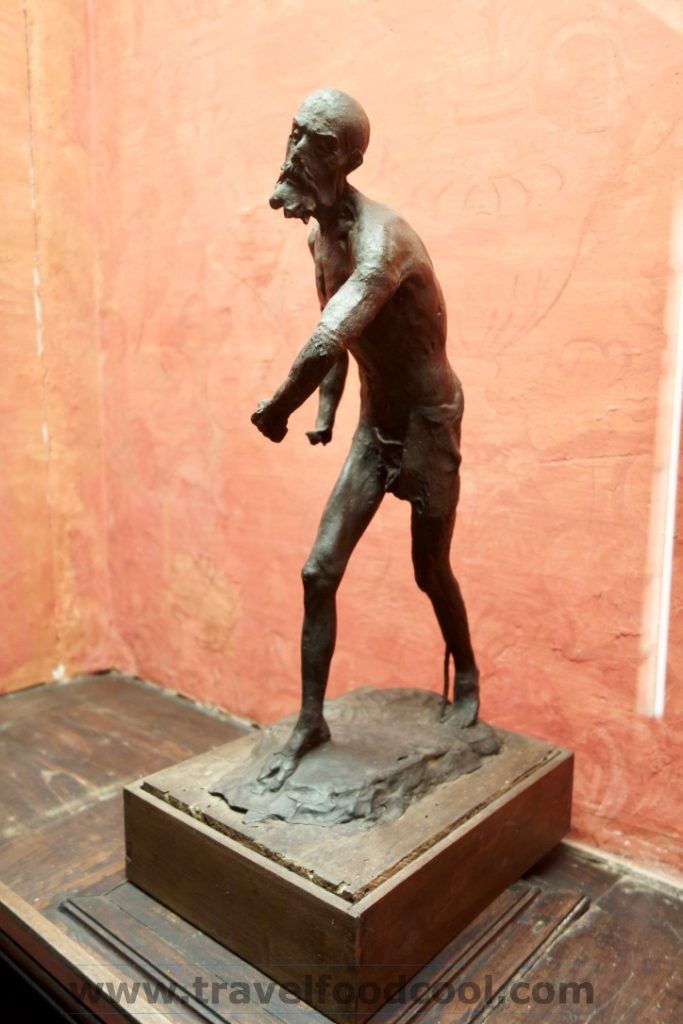
The model room has different miniatures which were the models (as the name suggests), or bozzetti, for larger pieces of work. The bozzetti of Michelangelo’s “Dio Fluviale” (the River God meant for the Church of San Lorenzo and newly restored) may have been lying in the basement of the house for about 300 years. The River God statue is normally shown in the same room as the facade of San Lorenzo (sadly, not the day I was there).
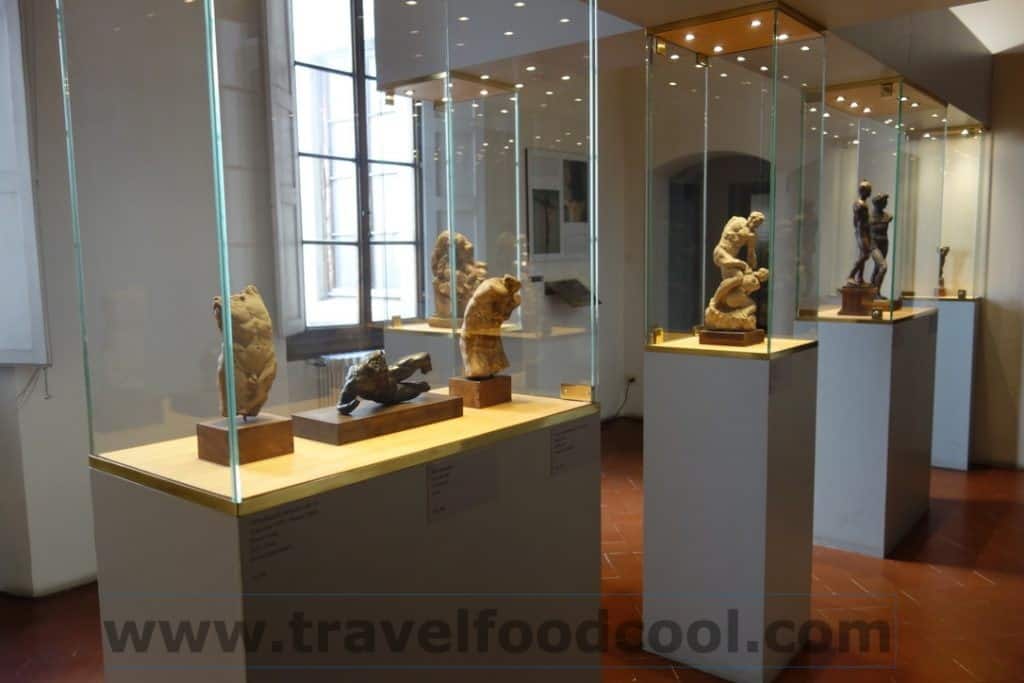
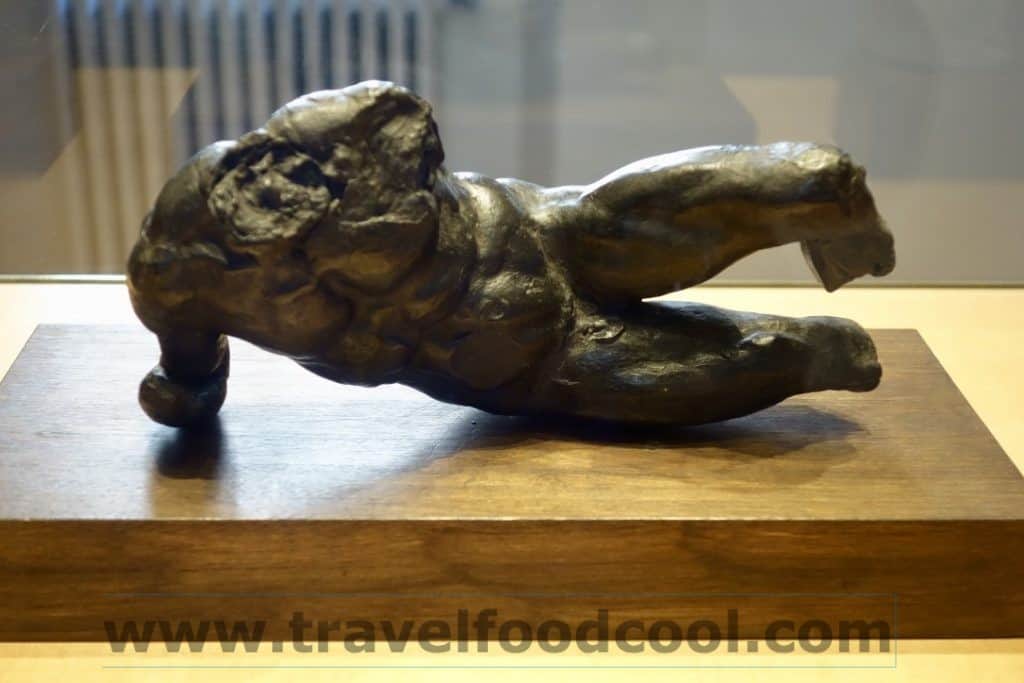
The Santo Spirito Crucifixion (1492?) was said to be a gift from Michelangelo to the priest of Santo Spirito who would let Michelangelo “study” the corpses from the convent hospital to gain a greater understanding of what lay beneath man’s skin. The Crucifix, created for the Santo Spirito high altar, was attributed to Michelangelo in 1962. The Crucifix is notable because Christ is naked.
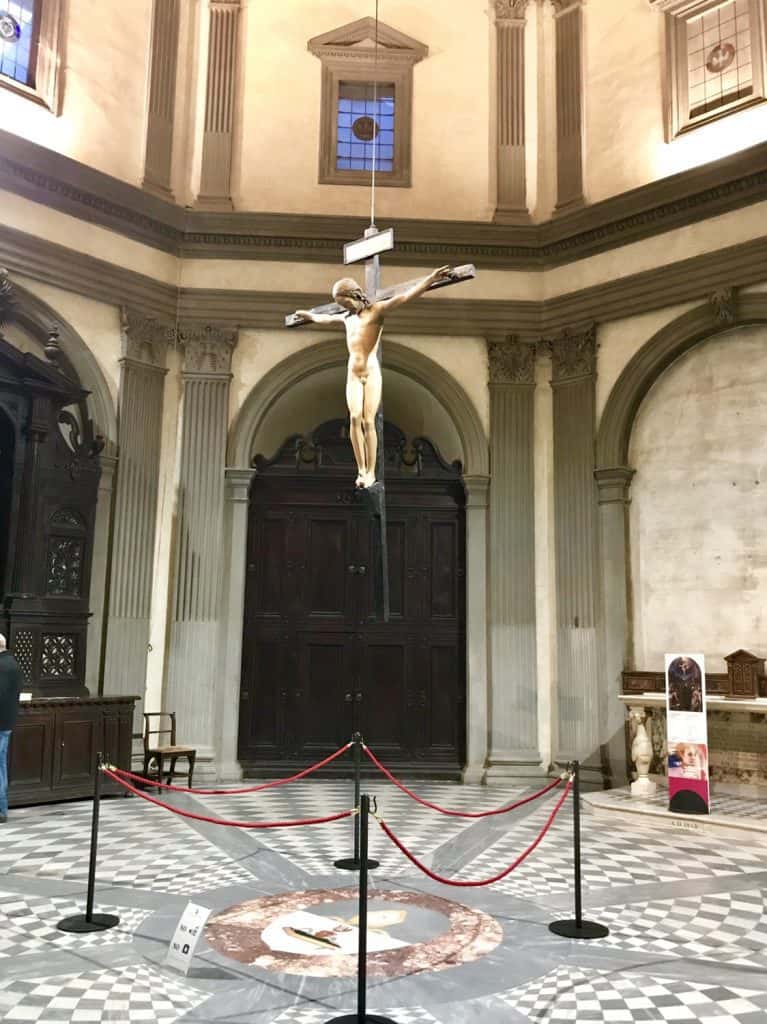
From 1964 to October 1999, this Crucifix resided in Casa Buonarotti. It was restored by the City of Florence and then moved in December 2000 back to it’s original home in Santo Spirito. If you follow my Florence walking tour (click here to see it), you will go by Santo Spirito, where you can buy tickets to see the Crucifix in the Cappella Barbadori.
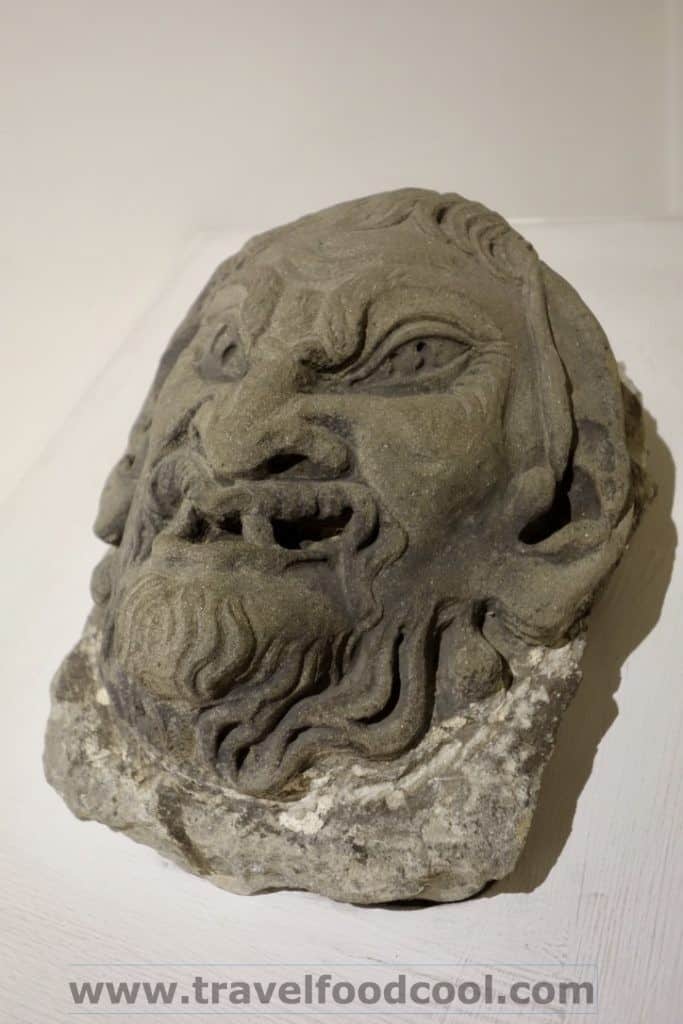
Finally, there is a room dedicated to Michelangelo’s continuing impact and “all things David”. I love the model that shows how they transported David by horse and cart from where he was created to Piazza della Signoria, outside of the Palazzo Vecchio, where David stood from 1504 to 1873, when he was moved to the Galleria dell’Accademia. There is also a ceiling of the Sistine Chapel laid out and another version of Zocchi’s Young Michelangelo carving the faun’s head.
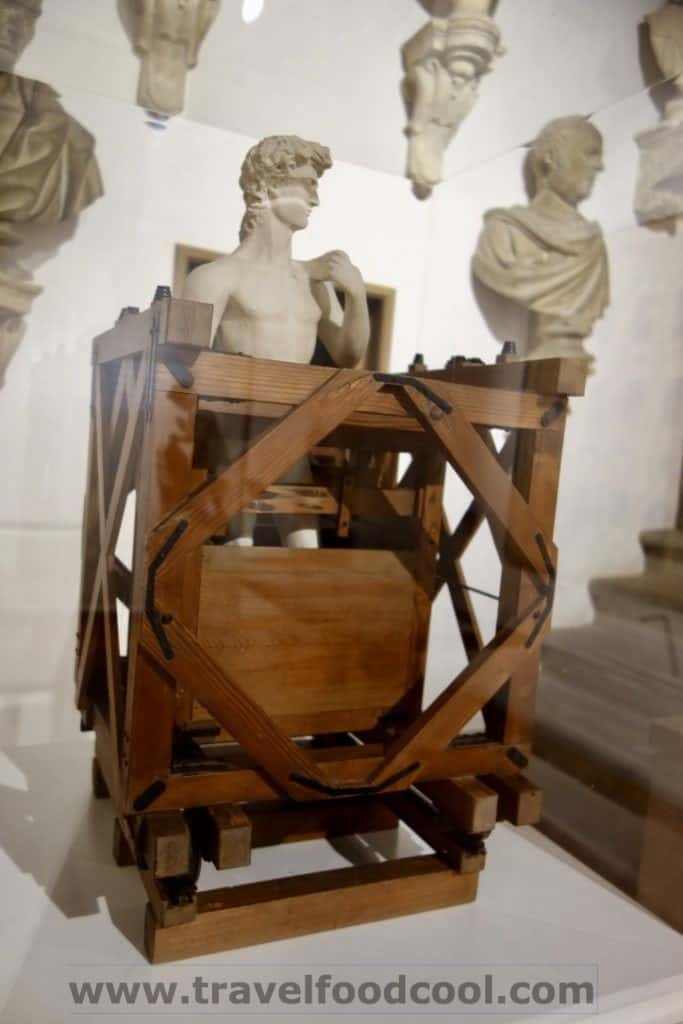
If you walk around the corner from Casa Buonarotti, you will come to the Basilica of Santa Croce, where you can visit Michelangelo’s tomb. George Vasari himself designed the tomb.
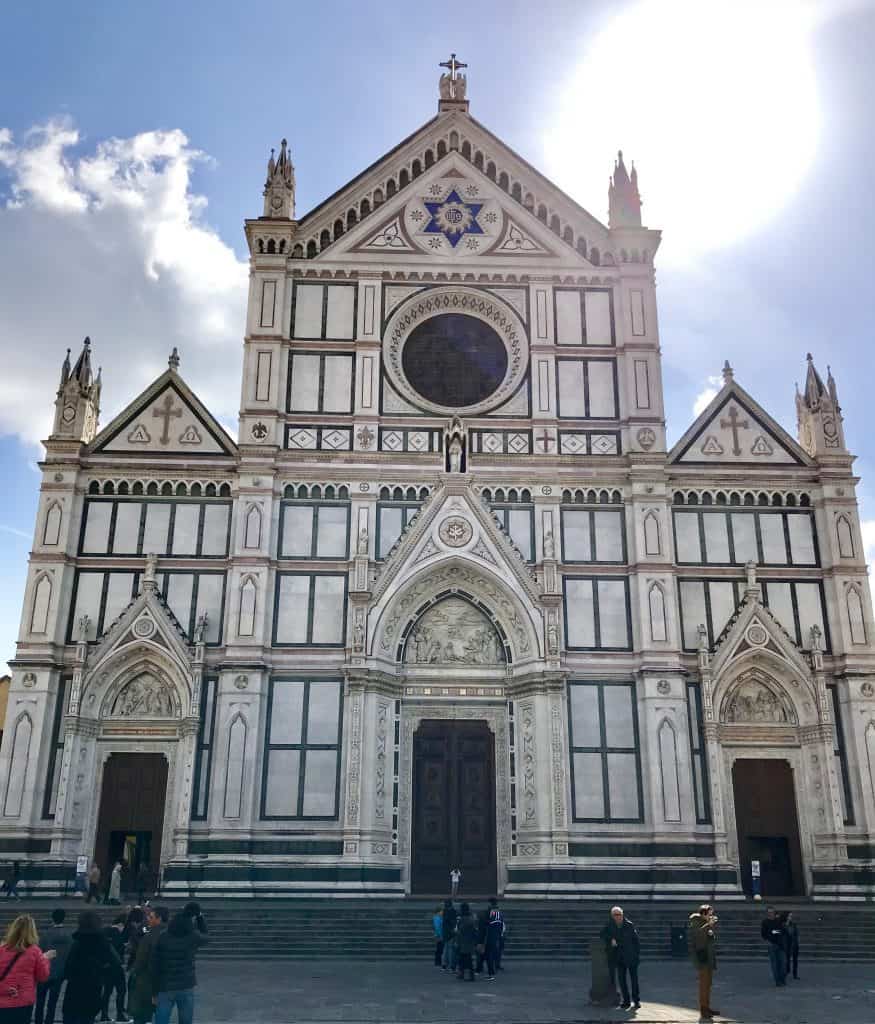
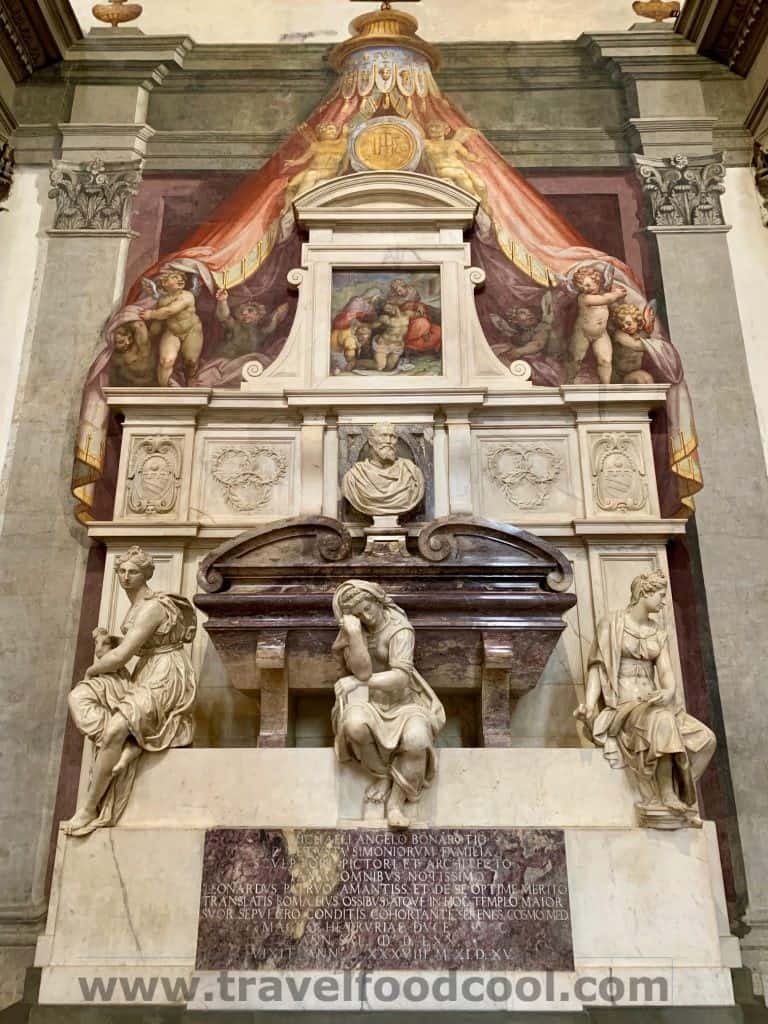
The museum is a bit of a quiet respite from the normally crowded museums of Florence. If you are in town, pop in and spend some time with Michelangelo at home. While you may not get pizza and beer, you will get to spend some quality time with some unique pieces of art.
Where: Via Ghibellina, 70, 50122 Firenze FI, Italy; When: Wednesday – Monday (closed Tuesday) 10am – 5 pm (Closed January 1, Easter Sunday, August 15 and December 25); Cost: €6.50 full/€4.50 reduced





















